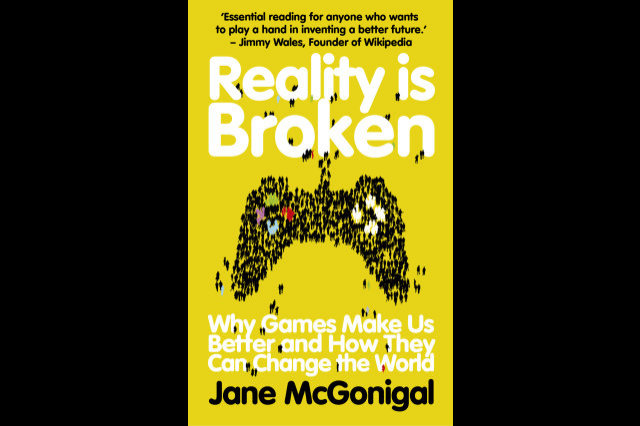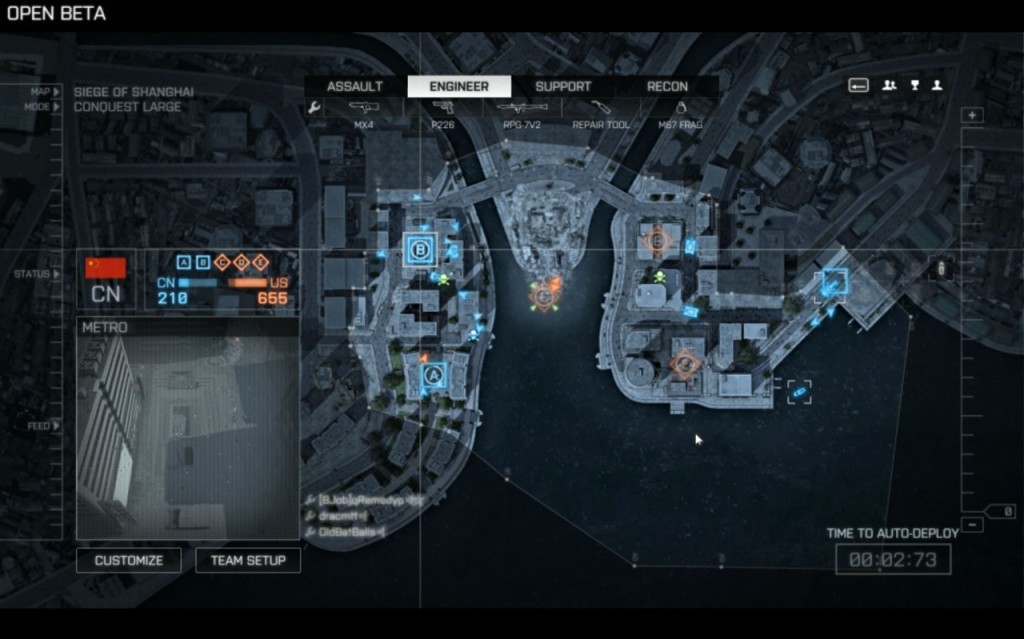Everyday millions of people all over the world play things called video games. They play them on consoles (as us Pure PlayStation editors do), they play them on PCs, they play them on tablets, they play them on their phones, and on various other devises. No matter what we play a video game on we can always tell that what we are playing is a video game, yet the content and level of interactivity can vary wildly. When it comes to other entertainment mediums it is a little easier to pinpoint how we know what they are. For example, we know a movie is a movie because we watch it on a screen. When we watch a movie we do exactly that: we just watch it. When it comes to video games on the other hand we push buttons, waggle motion controls, touch screens, type, push analog-sticks, and so on yet we always know what we are playing is a video game. The question is, what do they all have in common? This article is aiming to do two things, the first of which is to identify the core elements that are common across all video games, no matter what type of video game they are. The second aim is put those core elements to the test by looking at different video games, across different platforms and genres, in order to verify that those core elements are common across different video game types and genres.

You can interact with games using these, or via a dozen other methods from touchscreens to keyboards.

In his article, ‘What is a Video Game? A Short Explanation’, Phil Owen offers both a short and long explanation for what a video game is. The short definition is that ‘a video game is interactive digital entertainment that you “play” via a computer, a game console (like the Xbox or PlayStation) or a phone or tablet.’ He goes on then to offer a longer explanation for what a video game is but in the end it only reiterates the same problem that I mentioned in the opening – that the term video game acts as a large umbrella term for something encompassing a large variety of ways to interact and a large variety of genres. The online version of the Merriam-Webster dictionary offers the following for its full definition of the term video game: ‘an electronic game played by means of images on a video screen and often emphasising fast action.’ That definition stays in line with the, rather obvious, idea that a video game is something played on a screen, but it also narrows down the definition by implying that the majority of video games emphasise fast action. The problem here is when you take something like Hitman into account. The game allows for fast action but does not emphasise it, in fact it encourages a slow pace and patients yet I do not believe for a second that anybody would argue that Hitman is not a video game.
The British dictionary definition for the term video game, as shown on Dictionay.com, is as follows: ‘any of various games that can be played by using an electronic control to move points of light or graphical symbols on the screen of a visual display unit.’ Again, just like most definitions of the term video game, the common thing here is that you interact with them and they are displayed on a screen. That leaves us no closer to establishing what the core similarities between every video game are, bar they are displayed on a screen. However, the dictionary does state ‘any of various games’ that can be played on a screen, so perhaps trying to figure out what is common between all video games is the wrong approach. Instead the question should be to find out what is common across all ‘games’. After all, just like Call of Duty, chess is a game, but chess only becomes a video game once played on a screen, which means the first common element across all video games is that you interact with them on a screen. The question now then is ‘what are the common elements across all games?’

The front cover of Reality is Broken.
Early on in her book Reality is Broken, Jane McGonigal attempts to answer that very question and comes up with four core elements that are common across all games. Those are a goal, rules, a feedback system, and voluntary participation.
- A goal provides the players with a sense of purpose. It’s a specific outcome that players work to achieve.
- The rules, or limitations, place limitations on the ways in which players can archive their goals. They limit the ways in which players can interact with the game and remove the most obvious paths to victory.
- The feedback system is there to tell players how close they are to their goal or if they have achieved it. This can range from a progress tracker telling them how far off they are to simply seeing a video game’s credits roll, which usually indicates mission accomplished.
- Voluntary participation basically means that all players know they are playing a game and accept the goals, rules, and feedback system despite the fact that playing a game is unnecessary. This ensures the game remains fun and that the minute it becomes too stressful, or begins to feel like work, the player, or players, can leave.
- Then using what I established above I’ll add in a fifth element which is that in order for a game to become a video game it must be played on a screen and allow some level of player input/interaction.
I think those four elements fairly describe what is common across all games and the fifth makes those games into video games, but the only way to verify this is to put the elements through a series of tests. I’ll start by looking at a board-game version of chess, then I’ll move on to look at some video games. The goal in chess is simple, you either have to get your opponent’s king into checkmate or get them into a position from which they can no longer make a move. Chess also has rules in place to ensure that you cannot simply reach across the board, pick up your opponent’s king, break it, and win that way. Instead you have to take out your opponent’s king with your own game pieces. To make it more difficult each piece has its own specific move pattern and you can only move one piece per turn. Chess’s feedback system is a visual one. Every time you lose or take a piece it is moved off of the board, so you can see that progress is being made by looking at the increasing pile of chess pieces building up outside of the play area. There is also audible feedback in so far as if you hear your opponent saying ‘check’ you know it is time to protect your king. Chess also has voluntary participation because both players agree to play the game despite the fact that playing it is unnecessary and they are aware of the goal, rules, and feedback system. Therefore chess does seem to contain the four key elements that are supposedly common across all games. However, when played traditionally chess is not on a screen that allows for player input, so therefore while being a game traditional chess is not a video game.

The rules are there to stop scenes like this…
Next let’s take a look at the popular smart phone video game Temple Run 2. The goal in Temple Run 2 is to get as far as you can to claim the highest score possible while gathering coins. The rules are that you must get as far as possible without falling off of the track, crashing into an obstacle, or getting caught by the monster that is chasing you. The feedback system is your ever-increasing score at the top of the screen, which encourages you to keep trying because if you could get your previous high score then surely you are good enough to beat it, right? Just one more go. As for voluntary participation, you must choose to download Temple Run 2 and playing it means you are voluntarily taking part in something unnecessary and abiding by its rules. This means that Temple Run 2 fits our parameter for what makes a game. To top it off you must interact with it and you play it on a screen which makes it a video game, casual or not.
What about something like Minecraft? In Minecraft the player has multiple goals that they can choose to pursue. You can simply dig, gather and build the finest two-story semi-detached council house you can think of, or you could hunt the fabled Elder Dragon. This means that unlike Temple Run 2 or chess there is no one clear goal in Minecraft yet there are multiple goals one can pursue. The game has an abundance of rules, for example you cannot break bedrock, fire will spread, you cannot traverse lava, do not pet the Creepers, and I am sure Minecraft fans could name one hundred more. The feedback system is mainly visual in Minecraft as you can see your immediate impact on the world as you dig, blow up, and build. Again, it has voluntary participation as you choose to play it even though playing it is unnecessary and it is a video game because you interact with it on a screen.

A Battlefield 4 map during a game of Conquest. Note the ticket count over the mini map and the colour of the capture points, both are examples of visual feedback.
This time I won’t take a look at an entire game, instead I’ll look at a specific mode in Battlefield 4 called Conquest. The goal in Conquest is to deplete all of the opposing team’s tickets so they can no longer call on reinforcements. There are multiple rules governing how you can go about that, for example you can use brute force to deplete the tickets with kills or you can try to hold the majority of capture points. You cannot kill your own teammates. You can destroy certain structures, but not all structures because some are fundamental to the map. In Conquest, Battlefield 4 does an excellent job at offering both a visual and audible feedback system. Visually you can see both team’s tickets depleting over the mini-map and you can see the flags at capture points going up or down poles as they are being captured. You can also identify which team owns which flag by the colour on the mini-map or which flag is currently raised on the pole. Audibly you can hear your team’s commander shouting things like ‘we have captured Alpha’ or ‘the enemy have taken objective Bravo’, so you can tell how the game is progressing. If you are playing Conquest that means you are voluntarily participating in something that is unnecessary by accepting its rules and so on. The fact that it is both interactive and on a screen makes it a video game.
I’ve only tested out four games here, but as you can see three of them fitted the parameters set out in the first section for what is common across all video games. The other, which was chess played traditionally, fitted the parameter for being a game but could not be called a video game because traditional chess is played on a board not a screen. That all means that in order for something to be considered a game it is fair to say that it must contain the following four elements, which are common across all games: goals, rules, a feedback system, and voluntary participation. In order for that game to become a video game it must be playable on a screen and require a player to interact with it in order to progress through it. While a movie is a movie, no matter what genre it is, because we watch it on a screen we can now use these five rules to demonstrate what is common across all games and video games despite how different the ways we interact with each individual game, and what we do in each game, may be. Next time somebody tries to argue that ‘walking simulators’ are not video games you can simply apply these rules and tell them to shove it. Although I’m definitely not convinced that ‘walking simulators’ should be called ‘walking simulators’ in the first place. Possible topic for next week? Possibly.















